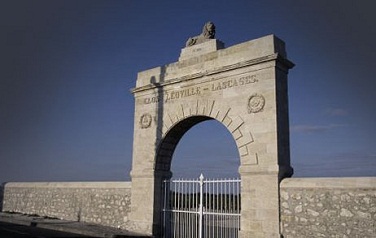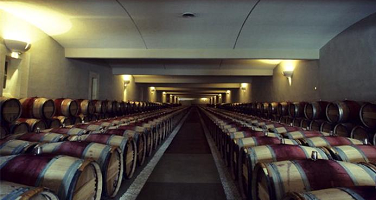Château Léoville Las Cases
St Julien Deuxième cru 1855 One of the leading "super-seconds" - a second growth chateau who's wines rival, in terms of quality and often price, the fabled First Growths of the Haut-Médoc. Before the Revolution, the Leoville estate was one of the largest and grandest in the region. At the time, it was in the aristrocratic ownership of the family of the Marquis de Las-Cases-Beauvoir. Unsurprisingly, the Marquis had to flee. To avoid Leoville being seized, the family decided to sell up but the complicated ownership of the estate, which was split between siblings, prevented the sale of Leoville as a whole and, in the end, only a small portion was sold off, to Hugh Barton, and this became Château Leoville Barton. The remainder of the estate came back to the Marquis' family when his son, Pierre-Jean, inherited most of Leoville, the only exception being a small portion inherited by his sister Jeanne. Jeanne's daughter married Baron Jean-Marie de Poyferré and, in 1840, this portion of the estate sheered off to become Château Leoville Poyferré. To stop further divisions among inheriting children, a holding company was founded to own Château Las Cases. Théophile Skawinski, who managed the estate, bought some shares which later passed to his son-in-law André Delon. The Delon family continued to buy share as they became available until, eventually, they became the owners of Château Leoville Las Cases. The bulk of Las Cases's vineyards - the Grand Clos - sit at the very northern end of St Julien, facing Château Latour across the Ruisseau de Juillac. The vines are planted to 65% Cabernet Sauvignon, 19% Merlot, 13% Cabernet Franc and 3% Petit Verdot. The hand-picked grapes are fermented in an unusual array of wooden, stainless-steel and cement tanks. Wines spend 20 months in oak, with the proportion of new wood for the grand vin varying from 50% to 100% depending on the vintage. Château Leoville Las Cases have one of the most highly regarded "second wines" in Bordeaux - Clos du Marquis. The first vintage was in 1902, long predating most of its competitors. Its status as a true "second wine" is sometimes disputed, as there is a distinct Clos du Marquis vineyard, a little way to the west of the Grand Clos, although the cuvée does include some declassifications from the grand vin and fruit of younger vines. Its status as a "second wine" also belies the quality which exceeds many of the region's "first" wines.

